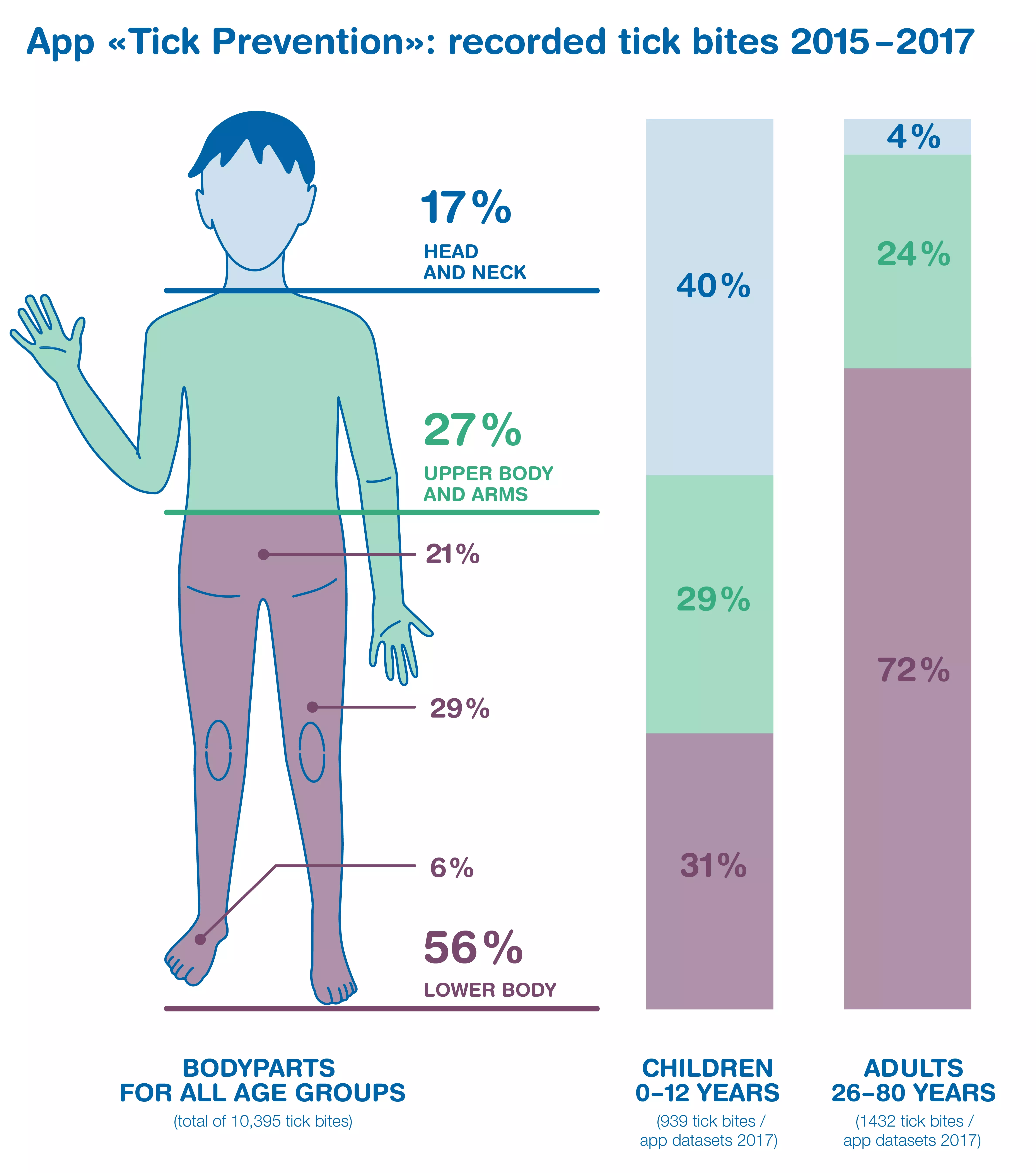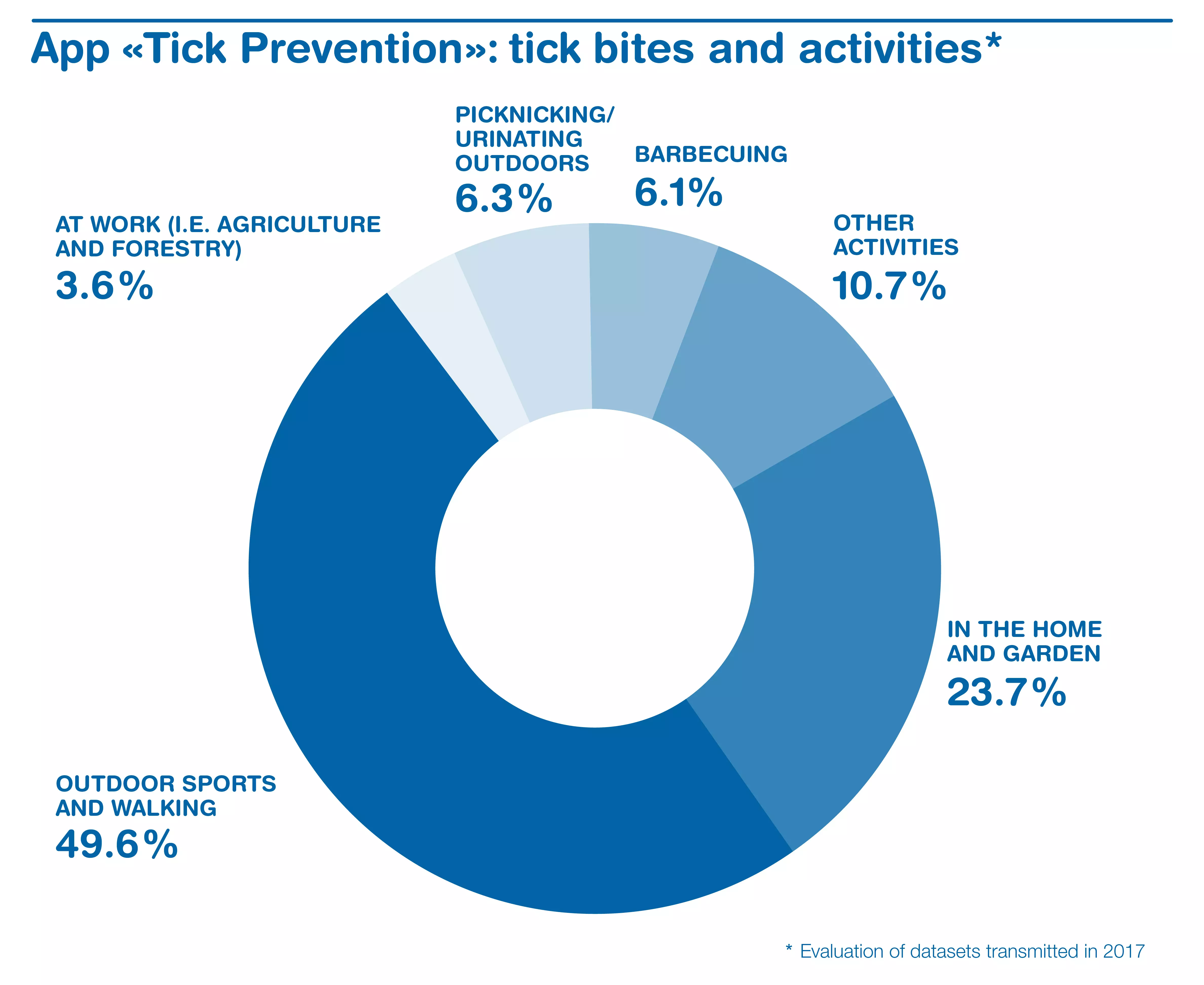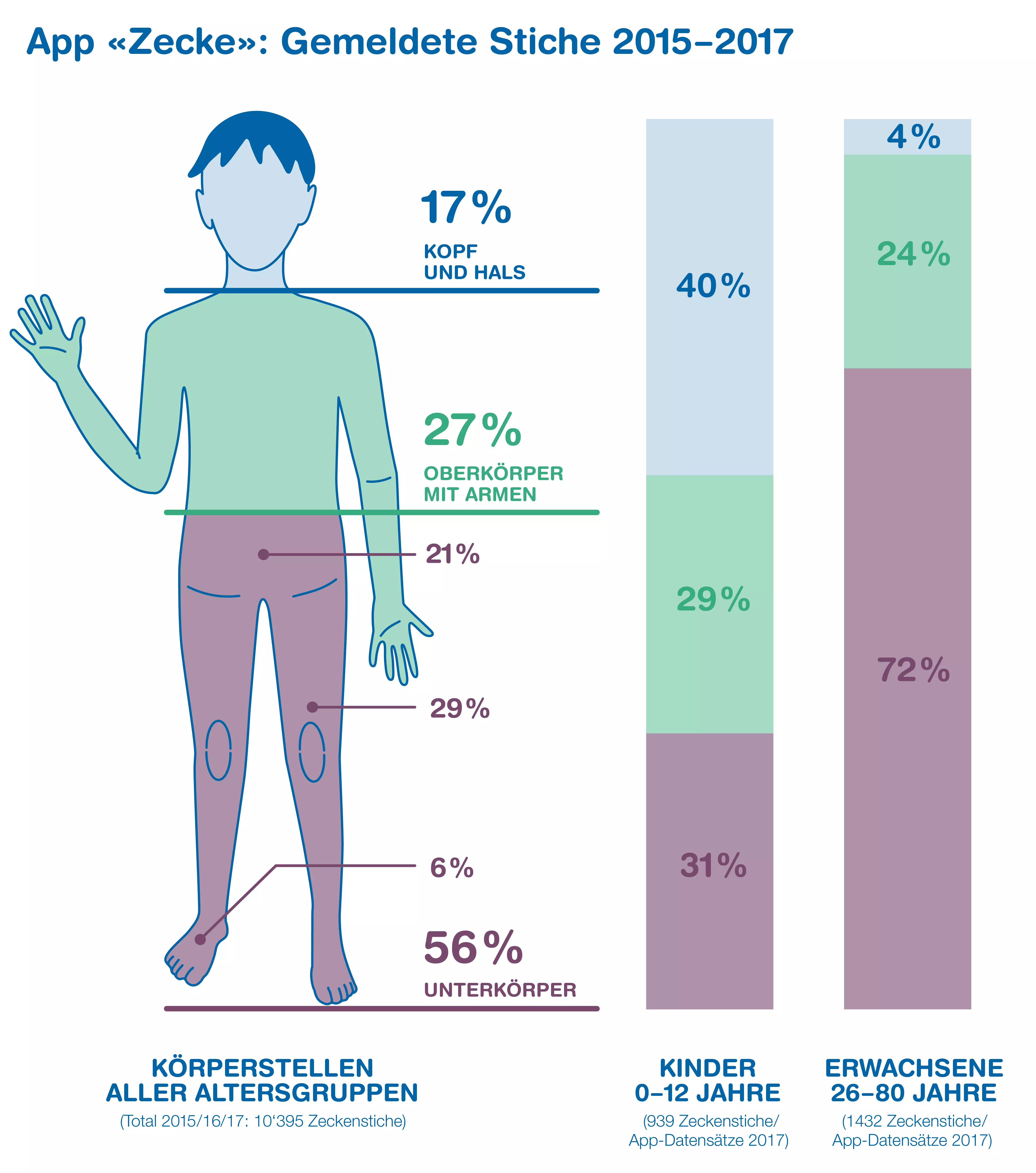Ticks predominantly bite children on the head and neck
The data from the ‘Tick Prevention’ app of the ZHAW Zurich University of Applied Sciences show that the head area is affected ten times more in children than in adults, and 50 percent of bites occur while participating in sports or leisure activities such as walking. Ticks that have bitten a person can now be sent to the national reference laboratory for research purposes.
40 percent of all reported tick bites are found on the heads and/or necks of children up to 12 years of age. However, in adults between the ages of 26 and 80, the lower body is mostly affected (72 percent). Across all age groups, 56 percent of all tick bites affect the lower body. These are just a few of the statistics recorded in the ‘Tick Prevention’ app of the ZHAW Zurich University of Applied Sciences. This information is based on more than 10,000 app notifications received since 2015. The differences between children and adults are based on statistics from 2017. ZHAW researchers would like to use this citizen science approach to discover more about the distribution of ticks and the risks they represent. These statistics confirm existing recommendations that, after participating in outdoor activities, children should be examined for ticks, especially around the hairline, behind the ears, and in the hair, followed by an examination of the entire body. For adults, the focus of tick checks should be on the upper and lower legs, behind the knees, the groin, under the armpits and the genital area.

40 percent of all reported tick bites are found on the heads and/or necks of children up to 12 years of age. However, in adults between the ages of 26 and 80, the lower body is mostly affected (72 percent). Across all age groups, 56 percent of all tick bites affect the lower body. These are just a few of the statistics recorded in the ‘Tick Prevention’ app of the ZHAW Zurich University of Applied Sciences. This information is based on more than 10,000 app notifications received since 2015. The differences between children and adults are based on statistics from 2017. ZHAW researchers would like to use this citizen science approach to discover more about the distribution of ticks and the risks they represent. These statistics confirm existing recommendations that, after participating in outdoor activities, children should be examined for ticks, especially around the hairline, behind the ears, and in the hair, followed by an examination of the entire body. For adults, the focus of tick checks should be on the upper and lower legs, behind the knees, the groin, under the armpits and the genital area.
The ZHAW ‘Tick Prevention’ app as a prevention tool
The free interactive ‘Tick Prevention’ app has been developed by the Zurich University of Applied Sciences (ZHAW) as a comprehensive prevention and data collection tool. The user voluntarily and anonymously transmits information relating to the recreational activity they were undertaking when bitten by a tick, such as the affected area of their body, as well as their age and gender. In return, the app reminds the user after 5, 10 and 28 days to check the tick bite for possible symptoms that could lead to disease. As the ZHAW's data analysis shows, the recreational behaviour of children and adults can affect the area where tick bites occur on the body. When playing outdoors, children climb headfirst into bushes and love to run through tall grass, which accounts for why the head and neck of children are particularly affected. Contrary to popular belief, ticks do not drop from trees, but instead climb to an approximate height of one meter above the ground, and are subsequently brushed off of flora as a person passes by.
Mostly while participating in outdoor activities or in the garden

Tick bites occur during the following outdoor activities: 50 percent while participating in outdoor sports and walking, followed by 24 percent in the home and garden, 6 percent while barbecuing, 6 percent while picnicking and when urinating in outdoors, 4 percent at work (for example, agriculture and forestry), and 11 percent during other activities.
Send in your ticks
In addition to registering bites, users can send ticks that have bitten people to the National Reference Centre for Tick-borne Diseases (NRZK), where the ticks are examined to detect possible pathogens. This will make it easier to predict the prevalence of infectious diseases in the future and will help to improve analysis methods and tools. Shipping details can be found in the app. To date, 86 ticks have been sent to the NRZK. However, in order to provide meaningful results, researchers need at least 1000 ticks that have been recorded in the app’s database. The ZHAW's tick website shows the number of ticks that have been received.
People who send in ticks do not receive any analytical results from the laboratory, since a positive result for a pathogen does not necessarily mean the pathogen has been transmitted to the person bitten. Equally, a negative result could also provide a false sense of security. Furthermore, infection from another, unnoticed tick bite is always possible.
Contacts
Specialist contact:
Werner Tischhauser, Research Associate, Phytomedicine Research Group, ZHAW Institute Natural Resource Sciences, Phone 058 934 56 77, e-mail zecken.iunr@zhaw.ch
Media contact:
Cornelia Sidler, Media Relations, ZHAW School of Life Sciences and Facility Management, Phone 058 934 53 66, e-mail cornelia.sidler@zhaw.ch
